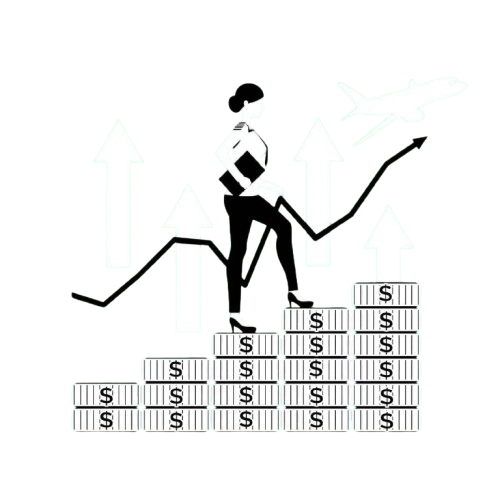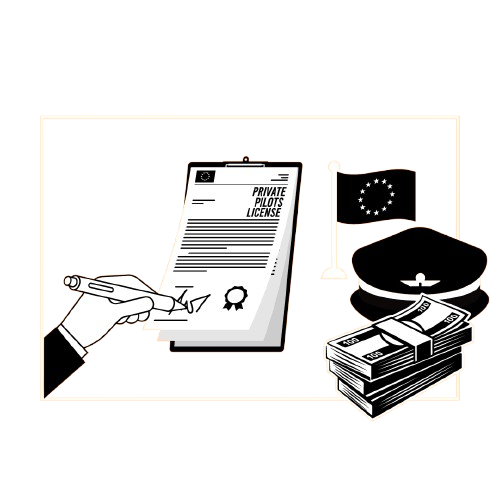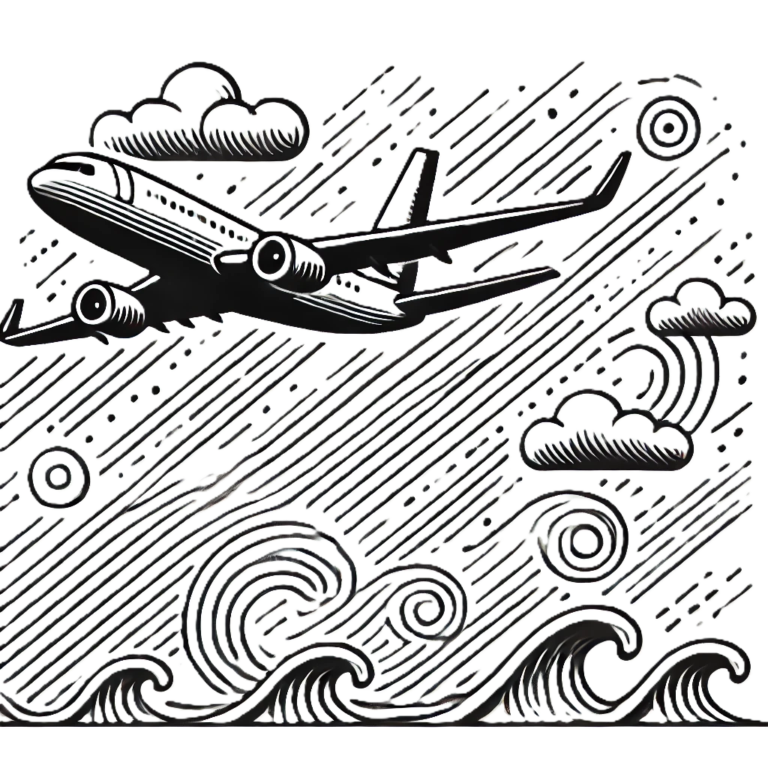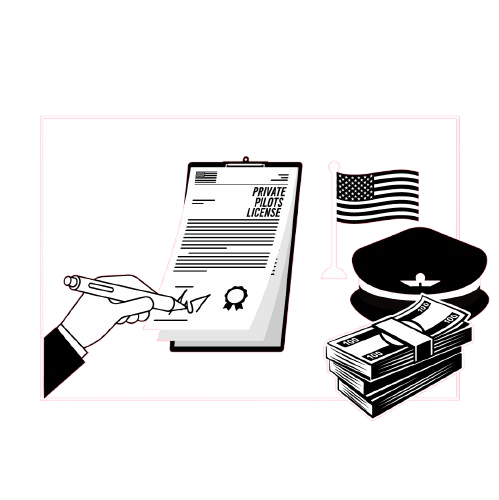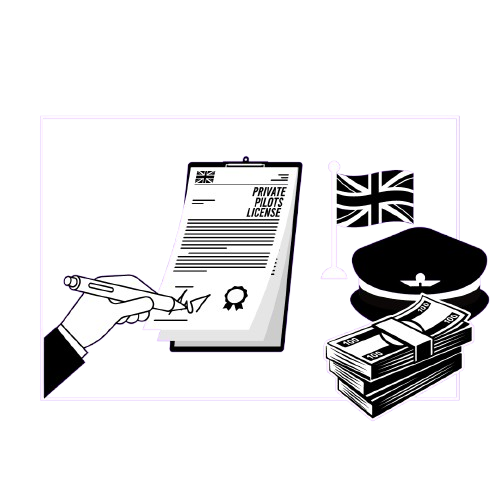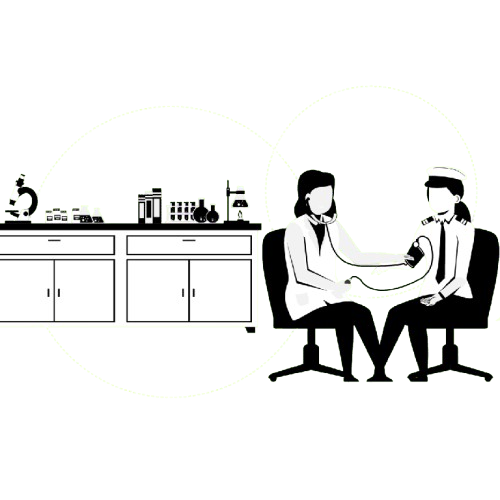Commercial Pilot Salary At Each Stage Of The Career
10 MIN READ
When aspiring pilots embark on their journey to become commercial aviators, understanding the commercial pilot salary throughout a pilot’s career progression is essential.
Whether flying a Boeing, Airbus, or Embraer, the pilot career progression and career path certainly is unique.
So let’s look at a commercial pilot salary in the USA, UK, and Europe and understand how much flight crew earn at each stage of their career progression.
This is part of our full blog post series all about a pilot salary.
THE QUICK ANSWER
Pilot Career Progression – An Overview
The importance of understanding salaries is true for any job, but even more so with aviation, where the cost of flight training to become a professional pilot can be close to $90,000/£90,000 or, in Europe, €90,000.
Getting over this first step and achieving the required flight time and certification can seem impossible.
New pilots entering the industry can expect to earn roughly $/£/€50,000+ in their first year, but these salaries are increasing and do rise quickly through a pilot career progression.
However, regional airlines in America have been increasing their salaries recently, and some airlines are paying brand-new applicants as much as $100,000 annually (including flight pay and other extras) for their first year.
Now is a great time to discuss a commercial pilot salary, as the pilot shortage in the United States is causing a commercial pilot salary to go astronomical.
American Airlines pilots recently offered a deal to see a senior long-haul captain earning over $590,000 annually, a huge commercial pilot salary.
With this, Delta Airlines flight crew received a 34% pay rise over the next few years, and other airlines like United Airlines are feeling the pressure to increase their salaries so as not to lose their pilots.
These salaries have increased massively since 2021 when the Bureau Of Labor Statistics stated that the median salary for airline captains and first and second officers was $203,010.
Still, not a bad commercial pilot salary, especially as this includes inexperienced second officers too, and this figure is likely to increase by 20-40% due to the pilot shortage. This shortage of necessary talent could greatly benefit a pilot career progression in the near future.
(These figures are rough guides for educational purposes and might not be 100% accurate at your time of reading. Some airlines will offer more or less than the figures stated)
The Main Factor Impacting A Commercial Pilot Salary
Seniority is the major factor in increasing the salary throughout a pilot career progression.
The longer you have been in the airline, the more senior you will be; therefore, you will be paid more.
You must advance through your pilot career progression and become a captain to earn more money. This, too, requires seniority.
Luckily, we have completed a full, in-depth blog post covering everything you could ever need to know about a commercial pilot salary and answering the question ‘how much do pilots make’ once and for all.
The Salary Journey Of A Commercial Pilot: Salaries at Each Stage
The Beginning Stage Of Aviation – Flight Instructor (USA Only)
When you qualify, you won’t live as much of a ‘champagne lifestyle’ as you might later in your career as an airline transport pilot (ATP).
The next step differs from the airline career of a newly qualified aviator in the UK and Europe.
Before joining a regional airline, you must first acquire 1500 flight hours/hours of flight time. This is because of the 1500-hour rule in America set out by the Federal Aviation Authority (FAA).
Most will gain those flight experience requirements by flight instructing and training others to achieve their licenses, such as a private pilot’s license.
You can expect an hourly pay of between $15-$45 per hour for this work, with the average paying around $30.
Once they have these 1500 hours, they can join a regional airline.
Entry-Level Pilot Pay
America/USA
Historically starting salaries for regional airlines in America have been around $35,000 to $50,000.
These regional airlines are America’s smaller internal airlines, such as Air Wisconsin, Endeavour Air, etc.
However, regional airlines are now beginning to increase their pilot salaries to entice pilots to stay in their airlines longer and stop them from looking at regional airlines as ‘stepping-stones’ to the major airlines (Southwest, Delta, American Airlines, etc.).
Therefore, when you include joining bonuses, flight pay (per diem pay), and other incentives, some regional airlines now pay as much as $100,000 for your first year as a regional airline first officer!
However, you can expect the range to be anywhere from $50,000 – $100,000+ as of 2023.
A regional airline is like Skywest Airlines, whereas a major airline is like Delta Airlines, FedEx, etc. You can expect a big salary difference between majors and regionals (we will discuss this later).
UK/Europe
Those in the UK or Europe don’t need to worry about this 1500-hour rule, as you can fly for a major airline straight after flight training.
You can read how I went from zero experience to flying passengers in under 24 months.
With this, UK/European pilots can expect starting salaries in the region of £/€30,000 – £/€50,000+, depending on the type of aircraft they are flying and the airline they work for.
With other factors such as flight pay, time away from base pay, etc., these pilots can expect to earn £/€45,000 – £65,000 in their first year.
Although those in the UK and Europe aren’t as well paid as those in America and Canada, it’s still a handsome salary.
Therefore, UK/European flyers will earn a better commercial pilot salary earlier. But those in America will eventually catch up and earn far more.
It’s certainly not the big bucks you can expect to make later in your career.
As you continue through your pilot career progression, your salary will grow with your experience and time spent in the industry.
Entry-Level Pilot Pay
So what will your pilot career progression and commercial pilot salary look like after working in the industry for a few years?
Pilots will experience the most significant pilot salary increase in their first five years at work.
After completing flight school and training, flight crew can experience a commercial pilot salary increase of roughly 70% from their first year of employment to their fifth year, when they can earn some serious money.
Even after achieving the minimum number of hours of 1500 flight hours, those in America will require a certain number of hours on specific aircraft types (usually larger turbo-propellor or smaller jet aircraft) before being given employment by a major airline.
Therefore, those in America and Canada will nearly always start with a regional airline before working for a major airline (like Southwest, Delta, etc.)
Good news, though – Southwest Airlines recently reduced their 1000 jet/large turbo-prop hours requirement to 500, meaning pilots at lower-paying regional airlines can join the better-paying major airlines quicker.
Becoming A Short-Haul Captain
America/USA
Before being eligible to apply to major airlines, you will require a minimum of 500 hours (most require at least 1000) flying larger and more complex aircraft types, such as large turbo-propellor or smaller jets (Embraer ERJ).
Flying 700-900 hours a year, you can expect to complete these hour requirements quickly.
However, as part of your pilot career progression, you might decide to become a regional airline captain instead of moving straight to a major airline.
As a regional airline captain, you can earn as much as $200,000 per year after just a few years working for that airline.
This is a big decision to make in your pilot career progression, as although you will be getting paid more at that point, you will slightly cap your earning potential going forward and could make more money working for a major airline.
UK & Europe
Those in the UK/Europe can expect to become a short-haul captain after around five years of flying for a major airline. Of course, it does very much depend on the industry/the demand.
Becoming a captain usually brings a large pay increase, and these new captains can expect a basic salary of around £/€100,000, with most airlines offering far more than this.
This figure is further increased with flight pay and other incentives like overtime.
Not bad after spending just five years in the industry.
Regional vs. Major Airline Pay Scale
After a few years of working for a regional airline, you should be eligible to go and work for a major airline, which also pays a better commercial pilot salary.
This is often most people’s goal and the usual pilot career progression.
However, it must be recognized that regional airlines are now beginning to up their commercial pilot salary offers to entice pilots to stay in their airlines longer and to stop pilots from looking at regional airlines as ‘stepping-stones’ to the majors.
You can expect your commercial pilot salary to rise substantially and quickly once you have the required hours to join the major airlines.
The pilot shortage in America is causing most major airlines to raise pay by over 30%. As a result, a year-one first officer at a major airline can earn well over $100,000 annually.
These salaries increase quickly; after five years in a major airline, you can earn over $250,000.
So whether or not you join a major airline as quickly as possible will be a huge factor in your pilot career progression.
The Experienced Pilot
Senior and experienced captains in America flying for major airlines can earn well over $500,000 a year.
Those senior captains in the UK can earn a commercial pilot salary of £200,000+ a year.
European senior long-haul captains earn over €250,000.
From entry-level positions to mid-career milestones and late-career advancements, the compensation for pilots evolves as experience and seniority increase.
It’s no secret that as you continue your pilot career progression, you will likely be given more and more money.
Long-Haul vs. Short-Haul
It’s worth noting that long-haul flyers nearly always earn a better commercial pilot salary than those operating short-haul.
But you must also be much more experienced to become a long-haul captain, which can often take 10+ years.
This gives the dilemma in your pilot career progression whether you should become a captain earlier on short-haul or continue as a long-haul first officer (on better pay than a short-haul first officer) until you are senior enough to move.
What Determines a Commercial Pilot’s Salary?
The Role Of Pilot Seniority In Pay
Seniority is essential when looking at the average airline pilot’s salary. Seniority is all about how long you have been in the airline. An essential step when looking at a pilot career progression and a commercial pilot salary.
The longer you have been employed, the more senior you will be and, therefore, the higher the median annual commercial pilot salary.
The Role Of Flight Hours In Pay
As with many professions, experience pays. As you gain experience through your pilot career progression, you will be eligible to become a captain.
Once you become a captain, you can expect to earn a far higher commercial pilot salary than if you were a first officer.
This does also depend partly on seniority, as you will also need to be senior enough to be given a position as a captain.
The Impact Of The Airline And Location On Pilot Pay
Some airlines pay better than others, even within the same country.
As you pass through your pilot career progression, you might become senior enough to be able to choose where you want to be based.
Therefore, choosing a state that pays better will give you a better commercial pilot salary.
Often, the major airlines will pay better than smaller, regional airlines. For example, American Airlines will pay better than a smaller regional airline.
The Impact Of Aircraft Type On Pay
As you continue your pilot career progression and become more senior, you can move on to different aircraft types.
Long-haul nearly always pays more than short-haul.
Therefore, flying an Airbus A380 will always pay more than flying an Airbus A320.
That’s why most flight crew will go through their pilot career progression by starting on short-haul, then going to long-haul as soon as possible.
Frequently Asked Questions
What is the average salary for commercial pilots?
According to the Bureau Of Labor Statistics, the median salary for airline captains, copilots, and flight engineers in the United States is $203,010 as of 2021.
However, this figure is now likely to be 30-40% higher due to the pilot shortage. Some captains earn over $600k per year.
What are some factors that can impact a pilot’s salary?
Seniority – More time in the airline = more pay.
Aircraft Flown – Larger aircraft pay more than smaller ones.
The Number Of Flight Hours – The more time spent flying, the more they will be paid.
Overtime – Pilots can earn thousands of dollars per hour.
What types of airlines tend to offer higher salaries for pilots?
Airlines that tend to offer higher salaries for pilots include major international airlines, cargo airlines, and regional airlines that operate in high-demand areas.
However, salaries can vary widely depending on various factors, including the size of the airline, the type of aircraft, and the specific job duties involved.
How Much Do Pilots Make Per Hour? Per Diem Pay.
Airlines often provide additional pay called flight pay, or sector pay, as it’s often known.
This is often broken down into how many hours per month they fly. More hours = more $.
However, the FAA and the CAA restrict this to a certain number of hours per year.
Are there any additional certifications or levels of education that can increase a pilot’s salary?
Obtaining an Airline Transport Pilot (ATP) certificate or earning advanced ratings in specific aircraft or types of flying can lead to higher pay.
How Do I Become A Pilot?
The first step for many is getting a private pilot license. However, this isn’t required. Instead, find a flight training school with an accelerated pilot training program and great relationships with major/regional airlines.
How Much Does It Cost To Become A Pilot?
It Usually Costs Between $60,000-$100,000+ (the same in £/€ too).
Usually, the faster you complete your training, the more expensive it will be.
How Many Flight Hours Do You Need To Become a Commercial Pilot?
Before joining a regional airline, you must acquire 1500 flight hours/hours of flight time. This is because of the 1500-hour rule in America set out by the Federal Aviation Authority (FAA).
Conclusion
A very rewarding career – the pilot career progression is completely different from many other fields of work.
Check out the full youtube video, all about salaries, and follow us on Instagram and tiktok!

